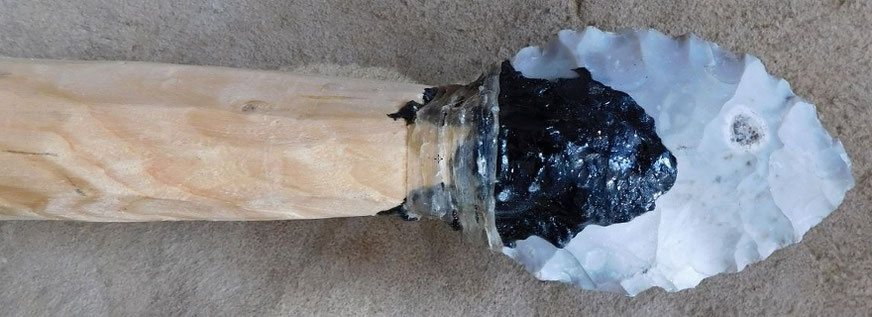
A group of archaeologists from Leiden University in the Netherlands has run a series of tests to figure out how Neanderthals could have made tar adhesives 200,000 years ago.
Tar adhesives, along with other materials, were used by Neanderthals and modern humans to attach stone tools to various handles. Multiple archaeology sites in Europe have yielded evidence of Neanderthal tar production, which according to the Leiden team, has led many to argue Neanderthals had advanced cognitive abilities and technology.
They say researchers have argued that tar production is difficult, requiring a mastery of fire, precise temperature controls, and knowledge of adhesive properties, meaning Neanderthals must have been highly advanced people. The Leiden group, however, says tar production as a benchmark for Neanderthal intelligence may be unfounded because tar making may actually be a simple process.
To find out, the group turned to experimental archaeology. Leiden researchers came up with three progressively harder ways to make tar out of birch bark, the same raw material used by Neanderthals, and then they went outside and tried their luck with all three techniques.
The simplest method required piling ash and embers on top of a roll of birch bark. A slightly more difficult method involved setting one end of a birch bark roll on fire and putting the roll, fireside down, in a pebble lined pit. The most complicated method required the group to put a container of birch bark in a pit, put a layer of organic material over the pit, put another roll of bark on top of the organic material, cover the whole thing with dirt and light it on fire.
After using each method to produce tar, the research team found that all three work. Each method also yields enough tar to form “cakes” similar in size to those found in Neanderthal archaeological sites. They also found large temperature fluctuations didn’t ruin their tar batches, meaning Neanderthals didn’t have to have grill master levels of temperature controls to be successful.
The research team says the methodologies they used in their experiment could provide tentative guidance in tracing the evolution of Neanderthal tar production.
The group published their results in Nature’s Scientific Reports. Their article can be found here.



